First ride: BMW F850GS and F750GS review
BMW's middle weight GSes get the refinement they've been waiting for
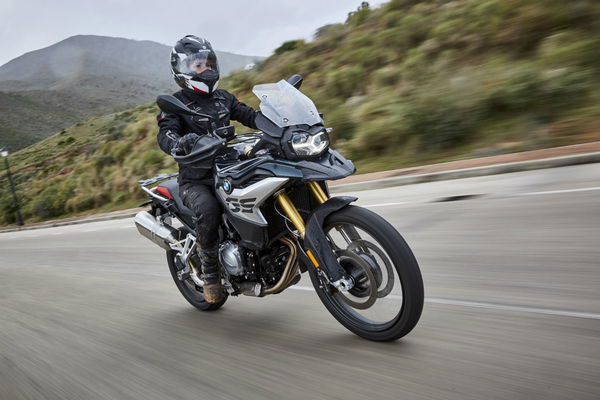
WHEN it was launched in 2008, BMW’S F800GS was the unicorn of adventure bikes.
It combined power, (relatively) low weight and dual sport capabilities in an adventurous package. And while it may not have been as big a hit as the German manufacturer’s flagship R1200 GS, it certainly had a dedicated fanbase.
"It’s cool, more than anything," one F800 rider, who wishes to remain anonymous, promised me, before I’d ever swung a leg over the bright yellow bike. "The 1200 is too big, too heavy. The F800 is like the world’s biggest dirt bike."
I later learnt this first-hand on a 3,500-mile return ride to Morocco. While the middleweight GS may have lacked the on-road finesse of its larger counterparts, it was at home on the dirt and dunes.
The fact that BMW barely changed the 798cc parallel powerplant for a decade is testament to its success. With a zero-degree crankshaft journal offset and stroke of 360/360, it was designed to replicate the feel of the boxer engine for which the brand is known.
Its restricted sibling, the F700GS, was another story altogether. Despite sharing that same engine it was pretty underpowered and uninspiring.
So it was with mixed opinions that I approached the updated models - now the F850 and 750 GSes at the launch in Malaga last week.
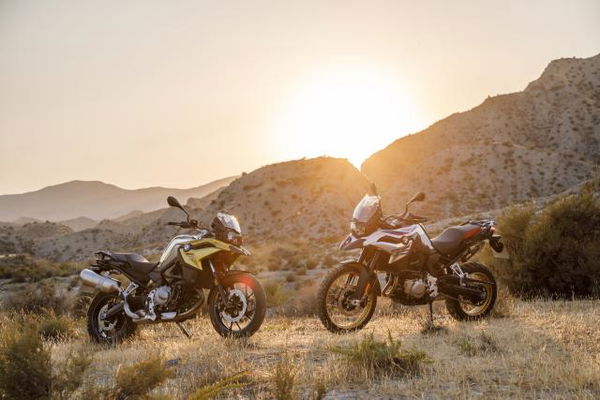
I was keen to see whether the 750 had improved, yet was prepared to mourn the end of the fruity 800 – a bike that, to my eyes, has stood the test of time.
As it turned out, both were (almost) bloody brilliant.
Rather than an update, the two bikes have undergone a complete overhaul.
The chassis has been uprated from a tubeless steel frame to a steel bridge type frame, inside which an all-new parallel twin sits, acting as a stressed member. Thanks to a revised bore and stroke its capacity has been upped to 853cc.And inside this beating heart of the bike, BMW has introduced a 90-degree offset crank, with a new firing order – every 270/450 degrees to be precise – which makes it feel, and behave a lot more like the twin that it is. BMW has also dropped the innovative rocking-beam balance system used on the old 700/800 motor, in favour of a more conventional twin balance shaft setup. There's also a new dry sump lube system.
Built by Chinese firm Loncin, this unit makes 95hp and 67.9lb-ft at 6,250rpm, which is electronically restricted to 77hp and 61.2lb-ft at 6,000rpm for the 750.
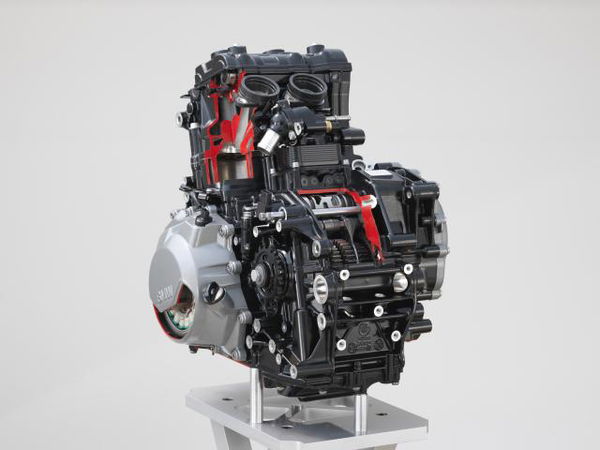
This character-packed motor takes the middleweight GS to new heights of refinement. There’s so much more power available – the 850 now has a power to weight ratio not far off the R1200 GS – which is delivered in a far smoother manner, thanks to those balancer shafts. The 850 is more powerful, faster and sounds a hell of a lot better than its predecessor, thanks to this free-revving unit.
BMW’s engineers gave the gearbox some serious thought too, which has resulted in revised ratios. First to third are shorter, giving for better low speed acceleration, while four to six are longer – seriously improving that motorway cruising comfort that I mentioned earlier.
However, Triumph has the edge over BMW with this one with the shorter first gear on its new Tiger 800. The GS still felt a little breathless under 2,000rpm, whereas the Tiger 800 grunt from the get-go.
A ride-by-wire throttle goes a long way to bring the bike in line with its competition, improving responsiveness and smooth acceleration. And the GSes also feature an anti-hop clutch, which works to reduce engine drag torque, especially after downshifting and also make the clutch lever lighter. The only complaint I’d have about this system is that the clutch lever seemed to occasionally stick as I’d go to engage it.
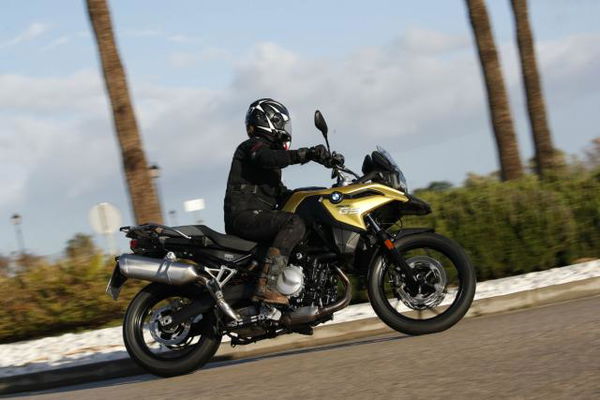
Despite its new chassis, updated looks and repositioned fuel tank – yep, the awkward, but weirdly cool, underseat tank of the last F800GS has been moved forward to improve the bike’s centre of gravity – the F850 maintains its tall, tough, action-ready stance.
Relatively long travel inverted forks front-up the F850GS, where the 750 wears a right-way-up pair. While the 850 maintains its nimble, manoeuvrable nature, the revised weight distribution and suspension geometry make a huge difference when it comes to handling. The bike turns in easier and feels much more stable than the flighty original. Equally, off-road, the standing triangle is spot on, and the GS feels just as light and chuckable as it does on the Tarmac.
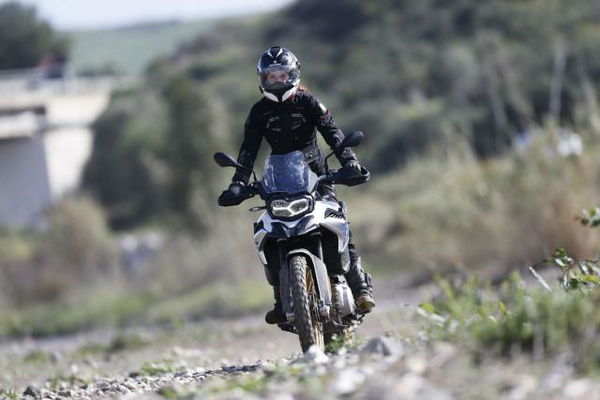
There’s a much more advanced suite of electronics – some standard, and lots more optional – including electronic suspension adjustment at the rear, with up to five riding modes.
As standard, the bikes come with ABS, traction control, two riding modes ('rain' and 'road') and Brembo brakes. However, opt for the Sport model and for £1,250 more you get cornering ABS and traction control, BMW’s gear shift assistant pro, heated grips, LEDs and three more riding modes of Dynamic, Enduro and Enduro Pro.
Dynamic mode proved to be the Goldilocks option on the Tarmac, with rain and road feeling a tad on the springy side. Larger riders set the preload to rider plus luggage, however I found the standard rider setting perfect for my much lighter(56kg) frame.
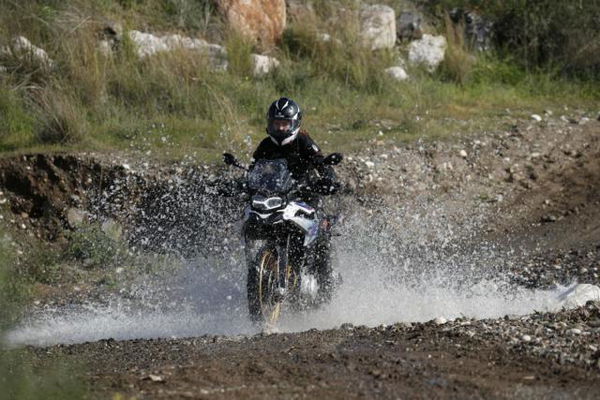
Off-road, Enduro Pro is the one to go for. With ABS only on the front wheel and late to kick in traction control, it performs like a large dirt bike, albeit with a subtle electronic safety net to catch you when the talent runs out.
Of course, there’s tons more opintional extras, including BMW’s TFT dash with Connectivity, cruise control and Intelligent Emergency call. To my mind, this much technology on a bike is overkill, however the system has already proved incredibly popular on the larger 1200 models.
CLICK NEXT FOR VERDICTS AND SPECS
Verdict:
If the military was a motorcycle, it would be the F850GS. It’s tough, capable and looks downright badass.
However, as impressive as the new 850 is, it’s not for everyone. And BMW know that, which is why the 750 is much less intimidating, lower in both in power and stature, and far more manageable on the road. It’s miles better than the 700, and would make an attractive commuter/road-going tourer.
Both come in Standard and Sport versions, with a £1,250 difference between the two. The 850 will set you back from £9,400, while the more attainable 750 costs from just £7,950.
The 850 has a wicked new look, although you can’t help but feel that Rally scheme mimics a certain other adventure model. As for the 750, I’m not keen on the shiny monotone panels but to each their own, and despite being yellow and beaked it’s certainly no ugly duckling.
Unfortunately thunder, lightning, rain and gale force winds prevented us from testing the GSes to their true capabilities, on or off-road, but after what miles we did manage, I can assure you that the new GS is a different beast to its predecessor.
With the bikes due to arrive In the UK from May, we’ll get out and about in the British countryside then and let you know how it fares here.
Specs:
Model tested: BMW F850GS and F750GS
Price: From £9,400 and £7,950
Engine: 853cc parallel twin
Power: 95hp and 77hp
Torque: 67.9lb-ft @ 6,250rpm and 61.2lb-ft @ 6,000rpm
Kerb weight: 229kg and 224kg
Seat height: 815mm – 875mm and 770mm to 830mm











